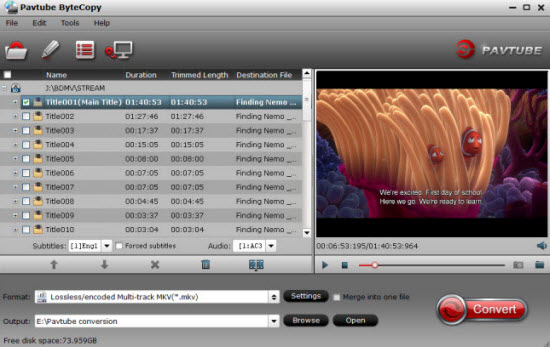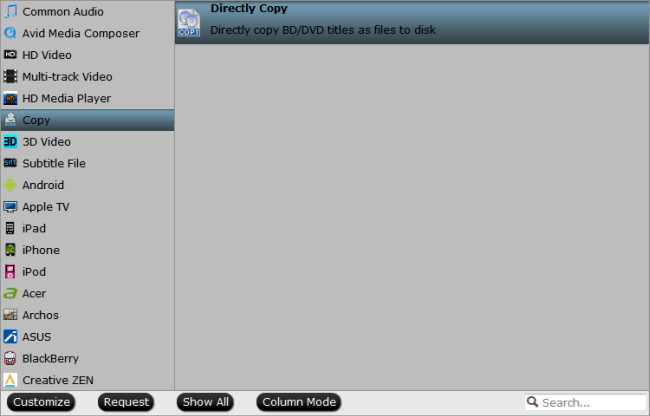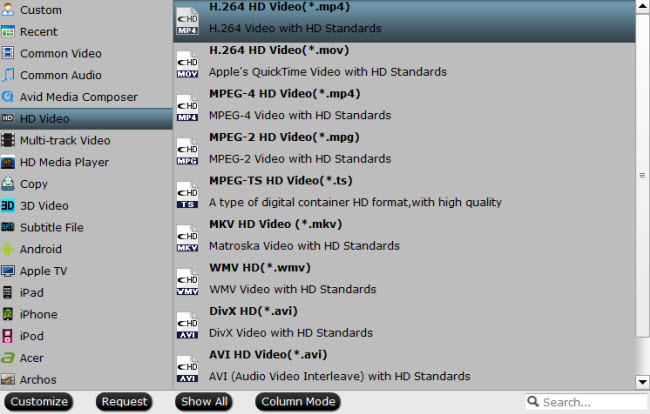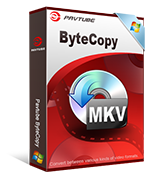The commercial Blu-ray discs are typically protected with some form of heave copy protection. Apart from the commonly used BD+, AACS, there are also many other copy protection such as region codes, Cinavia, UOP, Digital rights management, High-bandwidth Digital Content Protection and BD-ROM Mark adopted by Blu-ray discs to prevent unauthorized access to Blu ray disc. Although it is illegal to copy protected Blu-ray disc for commercial use, however, many Blu-ray disc owners believe that they own the rights to copy the Blu-ray disc for personal use since they have paid for it. The following article will introduce several distinct level of copy protection and how to legally and effectively bypass all Blu-ray copy protection with reliable Blu-ray copy protection removal.
Different distinct levels of Blu-ray copy protection
AACS encryption
The first level of copy protection applied to pre-recorded discs is the Advanced Access Content System (AACS) developed by the AACS Licensing Administrator, a consortium of companies including Disney, Intel, Microsoft, Panasonic, Warner Bros., IBM, Toshiba and Sony. It is based on Advanced Encryption Standard (AES), a robust 128-bit key encryption system developed by the US government.
AACS includes a system by which the keys assigned to a particular player can be “revoked” for future Blu-ray disc releases if it is determined that those keys have been compromised. When a newer Blu-ray disc is inserted into an older drive, the drive is required to check the version of the “Media Key Block” (MKB) on the disc and, if it is newer than the one the drive has internally, to copy over to permanent non-volatile memory the newer MKB. Thus playing newer discs propagates the revoked key lists out to all drives.
AACS was broken beginning in late 2006, and numerous AACS decryption programs are available online. The key revocation system ensures, however, that the AACS licensing organization and the hacker community are constantly playing a cat-and-mouse game.
BD+ protection
BD+ is a second level of copy protection that is optional for pre-recorded Blu-ray discs. After the stream files are encrypted using AACS encryption, they are further mangled randomly with instructions on how to repair the mangled files stored on the disc as special BD+ instructions. These instructions run in something called a “BD+ virtual machine”, special software that Blu-ray players are required to include. The virtual machine on the player runs the BD+ code on the disc and retrieves something called the “Fix-up Table” (FUT) to repair all the BD+ mangled regions on the disc.
BD+ was broken in 2008 by reverse-engineering the BD+ virtual machine. Each new BD+ Blu-ray disc release brings new twists in the virtual machine programs, each of which are again reverse-engineered by the hacker community. Just as with AACS, BD+ has become a cat-and-mouse game.
Currently, the BD+ system is owned by Irdeto, which bought it from Rovi Corporation in 2011.
Cinavia Protection
Cinavia, developed by a company called Verance, is a newer level of copy protection that is optional on Blu-ray discs. The system involves “steganography” or watermarking, in which a special encrypted data signal is hidden within a single audio channel in an audio track. Verance claims the Cinavia signal is inaudible, and that the signal can survive audio compression and recompression.
When a player with Cinavia support detects a Cinavia signal on a Blu-ray disc, it can verify whether playback should be allowed. The player can display one of four possible messages known as “Cinavia message codes”. The most commonly viewed messages are (1) “Playback Stopped” and (3) “Audio Muted”. Message (1) is supposed to stop distribution of “camcorder” recordings of first-run movies from theaters if the theaters include a Cinavia signal in the movie soundtrack. Message (3) is supposed to stop unencrypted ripped copies of movies. There is apparently no exception for consumer backup copies.
Cinavia detection became a requirement for Blu-ray players beginning in 2012. To date, the only major studio that appears to be using Cinavia is Sony Pictures, and that is not even for all releases. Most of the major studios seem to be hesitant about including Cinavia protection, perhaps because the system involves expensive royalty fees, or perhaps for fear of angering customers.
Customers have a reason to be angry, because unlike all the other protection schemes on Blu-ray and DVD discs, Cinavia protection is destructive and permanent. Audio tracks that include Cinavia have been deliberately damaged, and the damaged audio is present both for legimitate customers and for the supposed content pirates. When the audio track is protected with Cinavia, legitimate customers do not get the pristine audio content they paid for on their Blu-ray discs.
The Cinavia encoding system was broken in 2013, but it has proven very difficult to remove the protection and restore the protected audio track back to its original state. One ripper tool company claims to be able to do this, but their success rate is apparently spotty. Other ripper tool companies have figured out schemes to disable or fool Cinavia detection in players. Some stand-alone players (e.g. Panasonic, Oppo) have firmware patches available to remove Cinavia detection.
Original source:
http://www.miraizon.com/support/info_copyprotection.html
Remove Blu-ray copy protection
For people who just want to rip Blu-ray disc for personal usage, there are many applications on the market can assist you to bypass that protection. If you are looking for a free option, MakeMKV can be your best choice, which helps to copy Blu-ray to a large MKV file with all the video/audio tracks, meta-information and chapters well preserved. For those people who wish to break Blu-ray copy protection for full entertainment on different devices and applications, you will need a powerful Blu-ray Ripper software which offer more output format options, output file customization function. After a lot of testing and site comparison, we finally settle on Pavtube ByteCopy, which can do the following great job for you:
– Automatically remove the Blu-ray disc copy protection in the backgaround with the built-in disc decrypter
– Comprehensively remove all Blu-ray copy protection including AACS, BD+, Cinavia, UOP, DRM, BD-ROM Mark and High-bandwidth Digital Content Protection, etc.
– Keeps constant update to bypass new encryption such as MKB61 and MKB62 used on many of the recently released Blu-ray movies.
– Full importing support for 2D/3D Blu-ray disc, BDMV folder and ISO image file
– 1:1 full disc copy of Blu-ray movies with original file structure
– Fast main movie copy without unwanted comments, ads, trailers, etc
– Lossless multi-track MKV copy from Blu-ray with all the subtitle languages and audio tracks
– Rip Blu-ray to various popular file formats and device preset profile formats
– Select desired subtitle languages and audio tracks from internal Blu-ray movies
– Enable forced subtitles to disable the traditional subtitles while still preserving the subtitles that translate foreign language speaking parts.
– Add external subtitles to Blu-ray movies.
– Edit Blu-ray movies by trimming, cropping, merging, splitting, watermarking, deinterlacing, flipping, apply special rendering effect, change video picture effect, remove/replace audio in video, etc.
– Adjust output profile parameters such as video codec, resolution, bit rate, frame rate, audio codec, bitrate, sample rate, and channels to get better output video and audio quality.
– Available on both Windows and Mac platform (get Mac version).
Step by Step to Remove Copy Protection with Pavtube ByteCopy?
Step 1: Load Blu-ray disc into the program.
Run the program on your computer, insert the Blu-ray disc into an external Blu-ray drive. Click “File” > “Load from disc” to load Blu-ray disc into the program. Apart from Blu-ray disc, you can also use the program to rip Blu-ray folder and ISO image file.

Tips: The program can automatically detect the main Blu-ray title (the one with largest file size and longest length) for you.
Step 2: Copy Blu-ray in different ways.
Full disc copy
Make a full disc copy by hitting the  icon on the top tool bar of the main interface.
icon on the top tool bar of the main interface.
Main movie copy
From “Format” bar, select “Copy” > “Direct Copy” to copy the main movie of the Blu-ray/DVD disc.

Output digital file formats or device preset profile formats
From “Format” bar drop-down list, select one of your desired file formats or device preset profile formats according to your own needs.

Step 3: Start Blu-ray copy protection bypassing process.
After finishing all the settings, go back to the main interface, press the right-bottom “Convert” button to start rip copy protection Blu-ray movies to your desired file formats.
When the conversion is completed, click “Open output folder”, a window will pop out with all your converted files. Then feel free to copy your favorite Blu-ray to external hard drive, play Blu-ray with VLC on computer, transfer Blu-ray to iPad or stream Blu-ray movies to TV via home media server or from USB drive.












